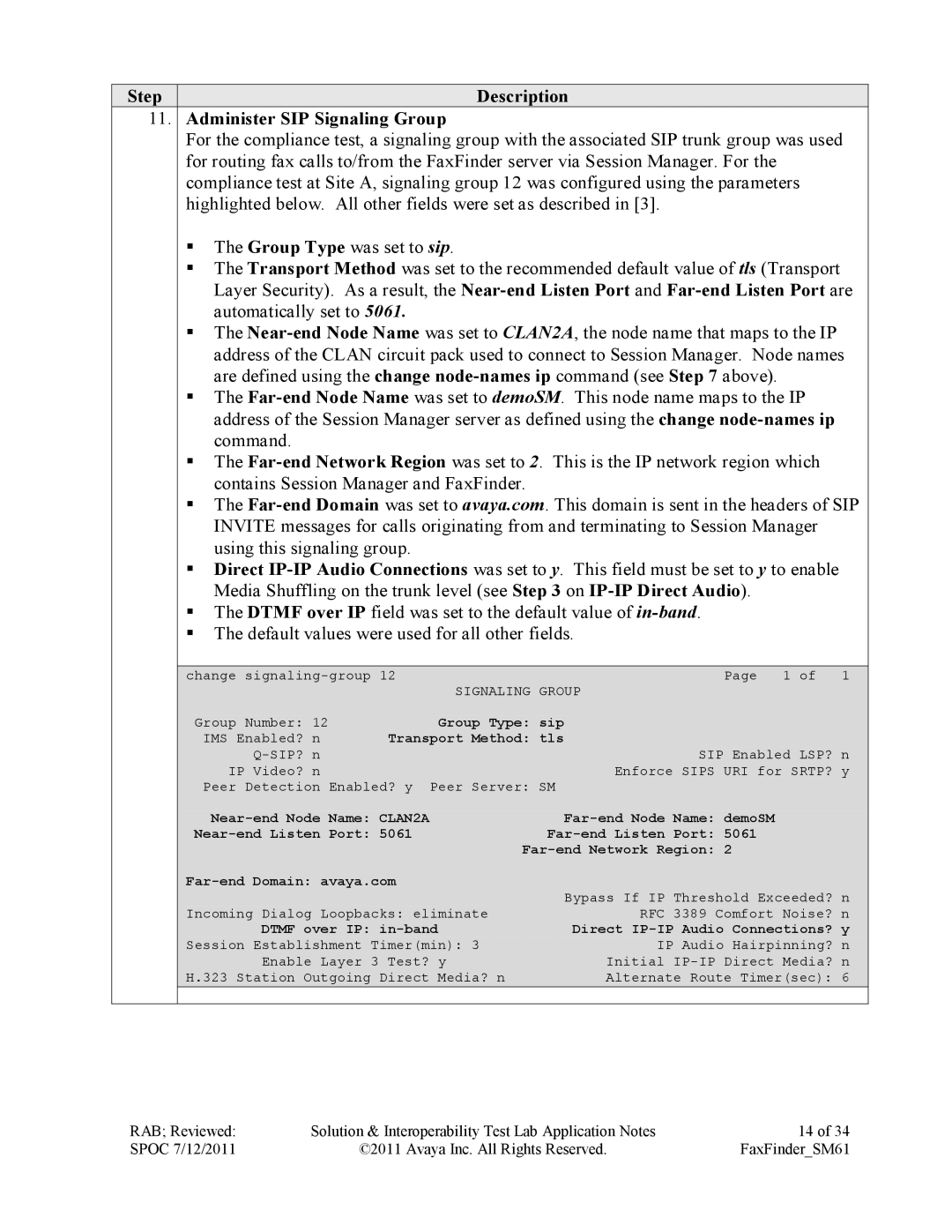SM61 specifications
Avaya SM61, or Avaya Session Manager 6.1, is a robust communication solution designed to manage and route voice, data, and multimedia traffic in enterprise environments. It is a key component of Avaya's unified communications portfolio, enabling organizations to streamline their communication processes while enhancing collaboration and efficiency.One of the main features of Avaya SM61 is its powerful session management capabilities. It facilitates the handling of various communication sessions such as VoIP calls, video conferencing, and instant messaging. This ensures that users can communicate seamlessly regardless of the devices or platforms they are using, whether it be a desktop phone, mobile device, or conferencing system.
Another significant feature of Avaya SM61 is its exceptional scalability. Organizations can easily expand their communication infrastructure as they grow, adding new users and services without the need for extensive reconfiguration. This flexibility is crucial in today’s fast-paced business environment, where agility and adaptability are paramount. Additionally, with session management capabilities, it can support up to 250,000 users, making it ideal for large enterprises.
Avaya SM61 also integrates a comprehensive set of security measures. This includes support for encryption protocols to ensure the privacy and integrity of voice and video communications. With features such as SIP security, organizations can safeguard their communication channels against unauthorized access and potential threats.
The technology underlying Avaya SM61 is based on the SIP (Session Initiation Protocol) standard, which is widely recognized for its ability to manage multimedia sessions across diverse IP networks. This allows for interoperability with a wide array of devices and applications, making it easier for organizations to implement a unified communication strategy.
Furthermore, Avaya SM61 provides advanced call routing capabilities that optimize communication flows. Its intelligent call routing ensures that incoming calls are directed to the most suitable resources based on various criteria such as availability and skill set. This not only enhances customer service but also improves internal collaboration.
Overall, Avaya SM61 stands out as a comprehensive solution for enterprises looking to enhance their communication infrastructure. With its rich feature set, scalable architecture, robust security, and advanced routing capabilities, it provides organizations with the tools they need to thrive in a connected world. As businesses continue to evolve, Avaya SM61 remains a crucial asset for maintaining effective communication and collaboration across diverse platforms and users.

